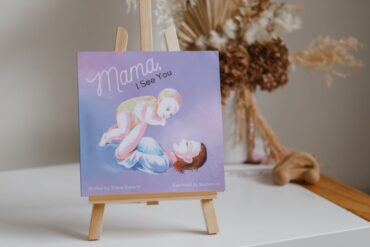By Emma Pickett, IBCLC
Somehow, somewhere, new mothers got the message that the gap between when a baby stops a breastfeed and the time they start to need another one matters a very very great deal. 24 hours a day.
It seems to matter beyond all logic and reason. They see this magic number – 90 minutes, 2 hours, 3 hours – as a measure of something sacred.
And it’s crap.
There are mums sitting at home, relaxing and nesting with their gorgeous new baby. There’s a disc from a box set in the DVD player, a cup of tea on the go, a recent chat with a friend. Breastfeeding is going well. Weight gain is fine. Baby is content. But when baby shows hunger cues after only 40 minutes instead of the hoped for 1hr 30 minutes, their heart sinks and they feel a sense something is fundamentally wrong. They aren’t ‘doing it right’. Their friend’s baby ‘goes longer’. Doubts creep in.
As adults, we grab a cup of tea, a glass of water, a sweet, a snack. We respond to our personal cues and we’re flexible depending on time of day, the temperature, our mood, our energy levels. Many go to bed with a glass of water or sip from a bottle throughout the day. I don’t know any adults that look at their watch and say, ‘Only 30 minutes till my next sip of water or mint! Not long now’. But yet we expect teeny growing babies to be governed by this artificial notion of time.
I spoke to a new mother last week who was perfectly HAPPY with her feeding routine but wondered if she should start to stretch her baby’s intervals because ‘that’s what you do’. When I explained that it wasn’t necessarily, she said she was more than happy to go on as she was.
I don’t know any adults that look at their watch and say, ‘Only 30 minutes till my next sip of water or mint! Not long now’. But yet we expect teeny growing babies to be governed by this artificial notion of time.
Where do these ideas come from? They don’t come from anyone with any breastfeeding education, nor antenatal classes with breastfeeding professionals, nor books written by those trained to support breastfeeding.
They come from popular baby care books and relatives and peers.
They seem to come from a fundamental misunderstanding of the science of breastfeeding and breastmilk production. Often they come from mid-20th century ideas based around the norms of formula-feeding and pseudo-science. And that’s all incredibly dangerous.
There are still people out there, surrounded by breastfeeding, who believe that a baby who feeds after 4 hours rather than 3 hours will ‘take more milk’. There are people who believe that you need to wait and hold a baby off to let your breasts ‘refill’. There are people who believe that when a baby does want to return to the breast after only an hour that must reflect a ‘problem’ and perhaps the mother even has a supply issue.
It’s scary and extremely frustrating that basic messages about how milk production works don’t reach the people who need them.
So what is normal? Well, how long have you got? Because there’s a lot of normal. A newborn should feed a minimum of 8-12 times in 24 hours. That means some might be going every 3 hours and others will be feeding more frequently than 2 hourly. Some babies may feed every 10 minutes every hour. Some may feed for 10 minutes every 2 hours. Some may feed for 40 minutes every 2 hours. For periods in the day, a younger baby will often cluster feed and not be happy away from the breast for any longer than a few minutes at a time. This natural cluster feeding may dominate an evening.
A very common call to the National Helpline goes like this: “My baby used to sleep in the evenings and now he’s awake for 3-4 hours. The only thing that seems to settle him is the breast. I feel like I must not have enough milk as he’s on there for ages. Surely there can’t be anything there.” As the baby swaps from breast to breast, getting small quantities of very high fat content milk and decompressing at the end of a long day, they know exactly what they are doing.
And soon their patterns will change again. Some babies will start to longer intervals in the day as the months go by. But NOT all will.
One of the most popular baby care books (which I better not name) gives a strong direction that while frequent feeding might be occasionally acceptable during growth spurts, this holy cow of the interval between feeds matters greatly. A 3-month-old baby might be going 3 hourly intervals but if this isn’t increasing at 4 months, then oh dear. This same writer believes a woman can measure her milk supply by doing a yield test and using a pump to extract milk which apparently will be the equivalent amount to what her baby extracts during a feed using an entirely different process. What this woman doesn’t know about breastfeeding could fill an encyclopaedia.
What I find particularly dangerous about her message that longer intervals are ‘better’ and ‘correct’, is that it means new mothers doubt their milk supply with absolutely no justification.
What I find particularly dangerous about her message that longer intervals are ‘better’ and ‘correct’, is that it means new mothers doubt their milk supply with absolutely no justification. And I know from having spent time on the message boards associated with this writer, many mothers will end up supplementing with formula to try and reach these magic numbers of minutes.
Why?
Babies are no longer being exclusively breastfed and parents are not following Department of Health recommendations because of incorrect information in a baby care book.
There are parents who choose to use formula for a whole host of complex reasons. Some do so happily and some do so miserably. But to do so, merely because you have read a lie in a book, seems tragic to me.
Our knowledge about breasts has been transformed over the last 20 years. Much of the pioneering work has been done in Australia by scientists like Professor Peter Hartmann and Dr. Donna Geddes, Steven Daly and their teams.
We used to think most women had a pretty similar number of milk ducts but the ultrasound research revealed there were less than previously thought and the range was big. One woman had 4 ducts at the nipple. One had 18.
But it’s the findings about breast storage capacity that we need to talk about here. When a baby feeds, some milk is manufactured during the feed itself and some is taken from milk that has been stored in the breasts between feeds.
Ultrasound revealed that a mother’s storage capacity cannot be guessed from breast size. Breast size is obviously not just about glandular tissue. The range in breast storage capacity was huge.
One mother was able to store about 2.6 oz per breast. Another woman stored more than 20 oz. That’s not a typo.
Women with a smaller breast storage capacity had a healthy milk production over a 24 hr period and their babies had good weight gain. But their babies might need to feed more frequently to access this healthy milk production.
Is this a mother with a supply problem?
See next page for more…












The generational trauma from lack of being breast fed themselves and distorted teaching about breasting that today’s mothers and babies have inherited makes successful enjoyable breastfeeding elusive for many. Breast feeding is natural and is part of our sensual life for mother and baby. It is the only thing that the newborn’s body is designed to have to survive. Anything else requires a compromise. Women’s long term health requires the completion of the biological process that begins at conception followed by gestation, birth and lactation. We are all diminished when this process is not fullfilled. Its completion affirms the natural order that has seen us evolve. Love.
Wonderful, thank you for your insightful comment!
Thank you for writing such an honest article about breastfeeding. I have been doubting and questioning myself over the last month because of negative thinking and watching clocks.. thank you for the reminder to trust my body and my baby ☺
Fantastic article, thank you.